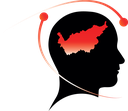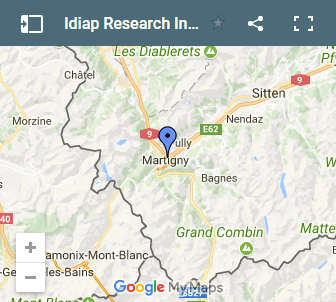Valais/Wallis AI Workshop 3rd Edition
 The aim of Valais/Wallis Workshops on Artificial Intelligence is to bring together engineers and researchers, from the Idiap Research Institute, HES-SO Valais-Wallis, EPFL Valais and other institutions, active in pattern analysis and machine intelligence and related applications in Security, Health or Energy.
The aim of Valais/Wallis Workshops on Artificial Intelligence is to bring together engineers and researchers, from the Idiap Research Institute, HES-SO Valais-Wallis, EPFL Valais and other institutions, active in pattern analysis and machine intelligence and related applications in Security, Health or Energy.
The objective is to stimulate collaborations between research institutions in Valais.
Every year, several Valais/Wallis AI Workshops will be organised on different topics. Workshops are open to the public prior registration. Valais/Wallis AI Workshops is a joint initiative between the Idiap Research Institute and HES-SO Valais-Wallis.
Webcast & Program
click on the sign + next to the speaker name to see abstracts.
09:00 – 10:00 + keynote speech: Prof. Jean-Pascal Pfister (ETHZ/Unibe)
10:00 -10:15 - Coffee
10:15 – 10:25 + Juan Otalora (HES-SO)
10:25 – 10:35 + Tatjana Chavdarova (Idiap) See webcasting here: 
10:35 – 11:00 + Dr. Vincent Andrearczyk (HES-SO) See webcasting here: 
11:00 – 11:10 + Subhadeep Dey (Idiap) See webcasting here: 
11:10 – 11:20 + Mara Graziani (HES) See webcasting here: 
11:20 – 11:45 + Dr. Mateusz Kozinski (EPFL) See webcasting here: 
11:45 -12:30 - lunch
12:30 - 14:00 + Business Ideas
- Business Ideas introduction + presentation Agrofly with Frédéric Hemmeler CEO and Co-founder. See webcasting here: 
- ecoRobotix with Steve Tanner. See webcasting here: 
Address
Centre du Parc
Rue Marconi 19
PO Box 592
CH - 1920 Martigny
Switzerland
Phone
Tel. +41 27 721 77 11
Fax +41 27 721 77 12
Geographical coordinates
Lat: 46.109362° / 46°06'33.7"
Lon: 7.084465° / 7°05'04.1"




